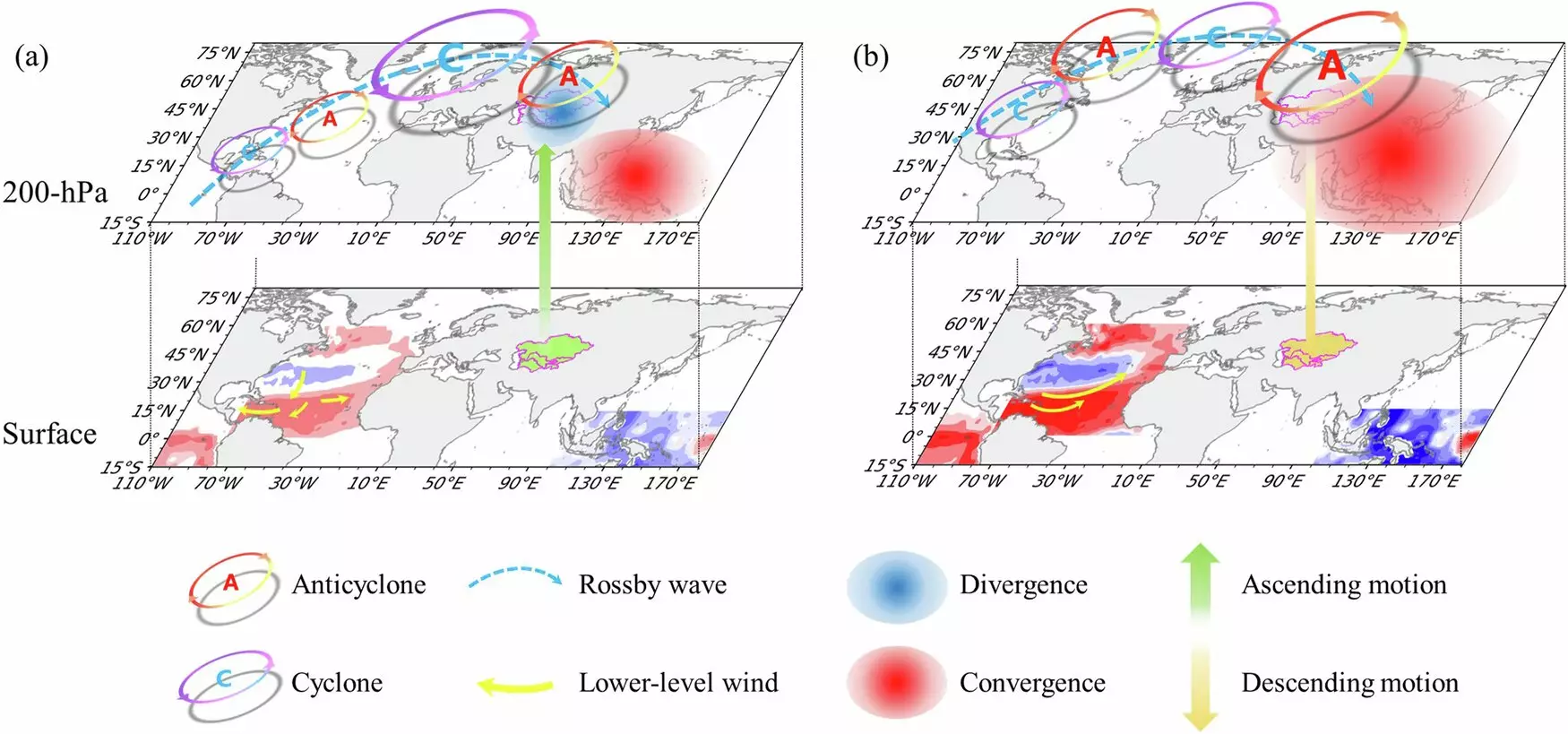Central Asia, composed of the republics of Kazakhstan, Uzbekistan, Turkmenistan, Kyrgyzstan, and Tajikistan, represents one of the world’s most considerable semi-arid to arid landscapes. Characterized by its continental climate, the region is influenced heavily by its limited precipitation, with spring being the pivotal rainy season that coincides with critical agricultural activities. Understanding the dynamics of climate within this region is of utmost importance for agricultural planning, water resource management, and predicting ecological shifts—especially given that the area’s ecosystem is fragile and profoundly influenced by any deviations in rainfall.
The El Niño-Southern Oscillation (ENSO) has been a notable player in shaping weather patterns around the globe, particularly in Central Asia. An essential characteristic of ENSO is its cyclical nature, affecting global climatic conditions and thereby altering rainfall patterns in various regions. Central Asia, in particular, benefits from the increased precipitation during El Niño phases, as these events are associated with enhanced moisture transport and atmospheric dynamics that contribute to a wetter spring.
However, research is indicating that the connection between ENSO and spring precipitation in Central Asia is not immutable; it has oscillated throughout the decades. A study published in the journal *npj Climate and Atmospheric Science* by the Institute of Atmospheric Physics of the Chinese Academy of Sciences highlights that the influence of ENSO has undergone significant transformations, particularly since the 1930s.
The study notes an initial weakening of the ENSO-spring precipitation link in the 1930s, followed by a period of strengthening until the 1960s and a resurgence in the relationship since 2000. These changes underline the complexity of climatic interactions and point to a range of factors that influence how ENSO affects rainfall in Central Asia.
Notably, two significant interdecadal factors were identified. The first involves the meridional pathway, through which Pacific sea surface temperature anomalies affect Central Asia’s atmospheric dynamics and moisture influx during El Niño events. A robust connection typically produces significant rainfall due to enhanced vertical motion resulting from upper-level divergence over Central Asia. Conversely, periods of weakened correlation see less significant impacts on rainfall, emphasizing the variability inherent in these climatic interactions.
The second critical aspect involves anomalies in sea surface temperatures across the North Atlantic, which can disrupt the expected influence of an El Niño on Central Asia’s rainfall. For instance, a unique temperature pattern characterized by cold anomalies in the middle North Atlantic coupled with warm sea surface conditions in subpolar and tropical regions can hinder the wetting associated with El Niño, especially during weaker correlation periods.
This pattern of disruption raises questions about its causative factors, particularly emphasizing the interactive role of wind patterns and the decay rate of El Niño events. When ENSO patterns dissolve slowly, stronger wind anomalies in the North Atlantic facilitate this disruption, leading to a horseshoe temperature configuration that influences precipitation trends.
A further layer of complexity stems from the Pacific Decadal Oscillation (PDO). The PDO’s long-term climate influences can determine how effectively ENSO modifies rainfall patterns in Central Asia. In a positive PDO phase, the link is often weakened as the delayed decay of an ENSO event exacerbates the North Atlantic sea surface temperature pattern, while in a negative PDO phase, this counteraction lessens, leading to an intensified relationship between ENSO and precipitation.
The emerging trend of a reinforced relationship between ENSO and spring precipitation since the 2000s suggests better predictability for rainfall patterns in Central Asia within recent decades. This is crucial information for regional stakeholders involved in climate forecasting, agricultural planning, and water resource management. Understanding these climactic intricacies is vital as they shape agricultural output and water availability in one of the world’s most challenging environments.
In summation, the findings presented by Prof. Huang Gang and his colleagues provide important insights into the dynamic interplay between ENSO and Central Asia’s climate, emphasizing the need for ongoing research to navigate the implications of changing climatic patterns effectively. The interdependencies highlighted in this research underscore the critical importance of adaptive strategies in response to an evolving climate pattern that continues to shape the future of Central Asia.


Leave a Reply